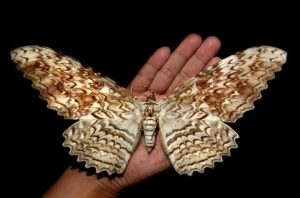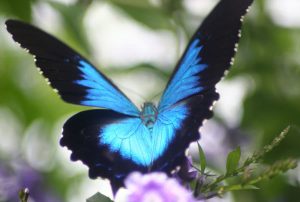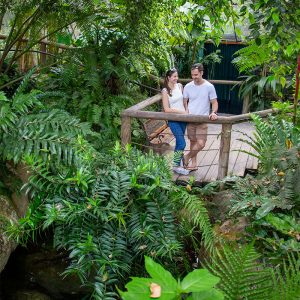Thought all moths fantasised about munching on your newest knit cardigan? Think again! Today we are debunking this one-fits-all moth myth with one of Tropical North Queensland’s native moths: the Hercules Moth.
The Hercules Moth: The Moth That Doesn’t Eat
If you thought the newest fad diet was hard, spare a thought for the Hercules Moth. Although it is the largest moth in the world, an adult Hercules Moth doesn’t actually eat!
Why you ask? Well the Hercules Moth doesn’t actually have a mouth!
The adult Hercules Moth survives on food stores from when it was a caterpillar.
These magnificent giant moths only live for 10 to 14 days and have the main goal of finding a mate and reproducing.
Interestingly, female Hercules Moths emit a pheromone that can attract male suitors from over 2km away. Now that’s what we call strong perfume!
Humans are unable to smell this pheromone, however male moths certainly can. The male moth does all of the chasing and will fly to the female emitting the pheromones.
What Does A Hercules Moth Caterpillar Eat?
Hercules moth caterpillars live on food plants such as Omalanthus populifolius, which is more commonly known as the bleeding heart tree.
At the Australian Butterfly Sanctuary, we we will cut down one large tree for each batch of around 12 caterpillars!
Caterpillars can also feed on Dysoxylum muelleri (red bean), Glochidion ferdinandi (cheese tree), Timonius rumphii and Timonius singularis. It also sips on plain water droplets off the host plant.
The caterpillar stage is the longest part of the Hercules Moth’s life. It will live for about 3 months in this stage before retreating into a cocoon.
Incredibly, these caterpillars grow up to 12cm in length and are dotted with yellow spikes. Such a huge caterpillar makes sense when we consider how large the moth itself is. The largest ever Hercules Moth had a wingspan of 36cm!
See the Hercules Moth in all stages, including caterpillars in the Australian Butterfly Sanctuary laboratory!







